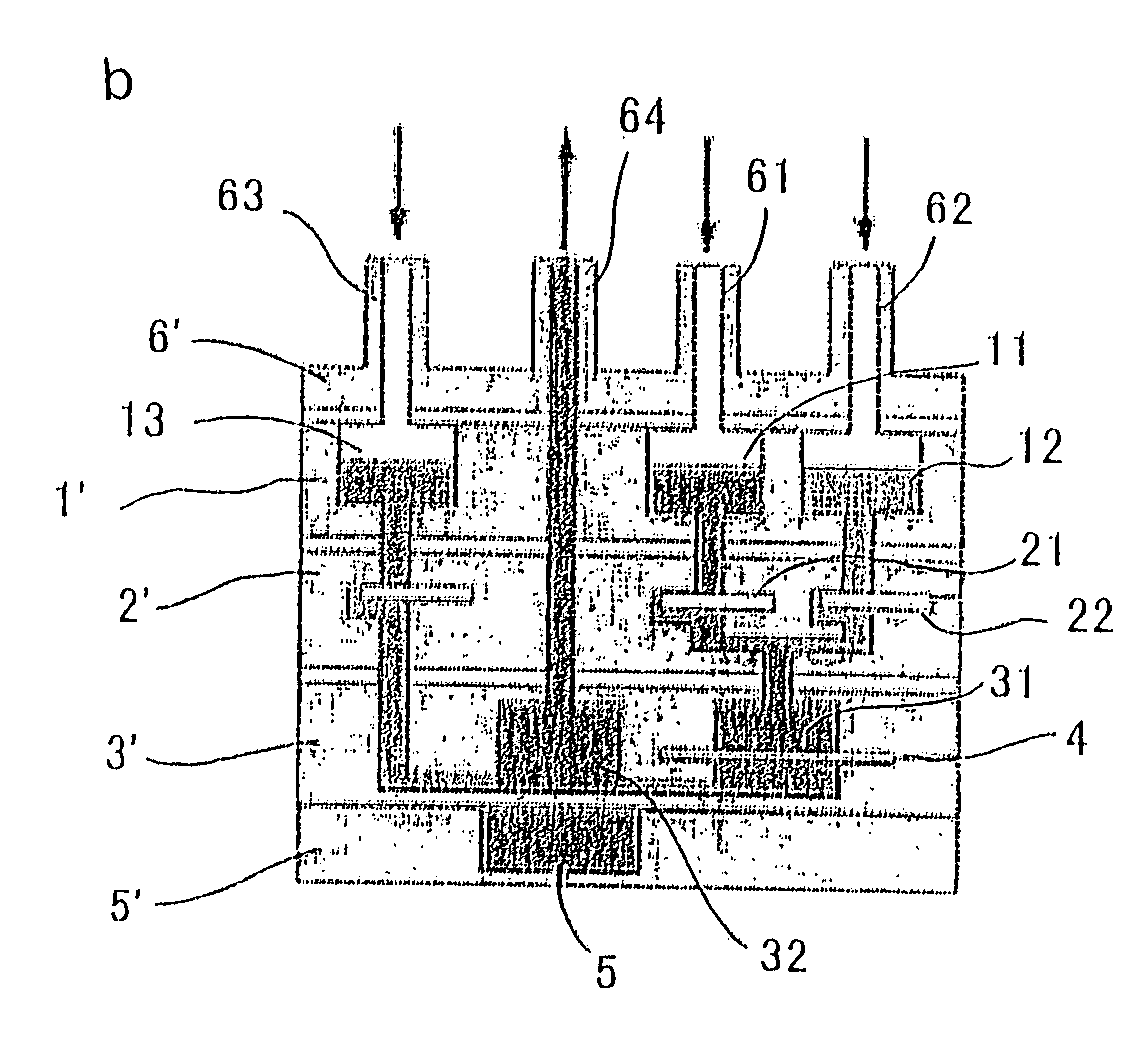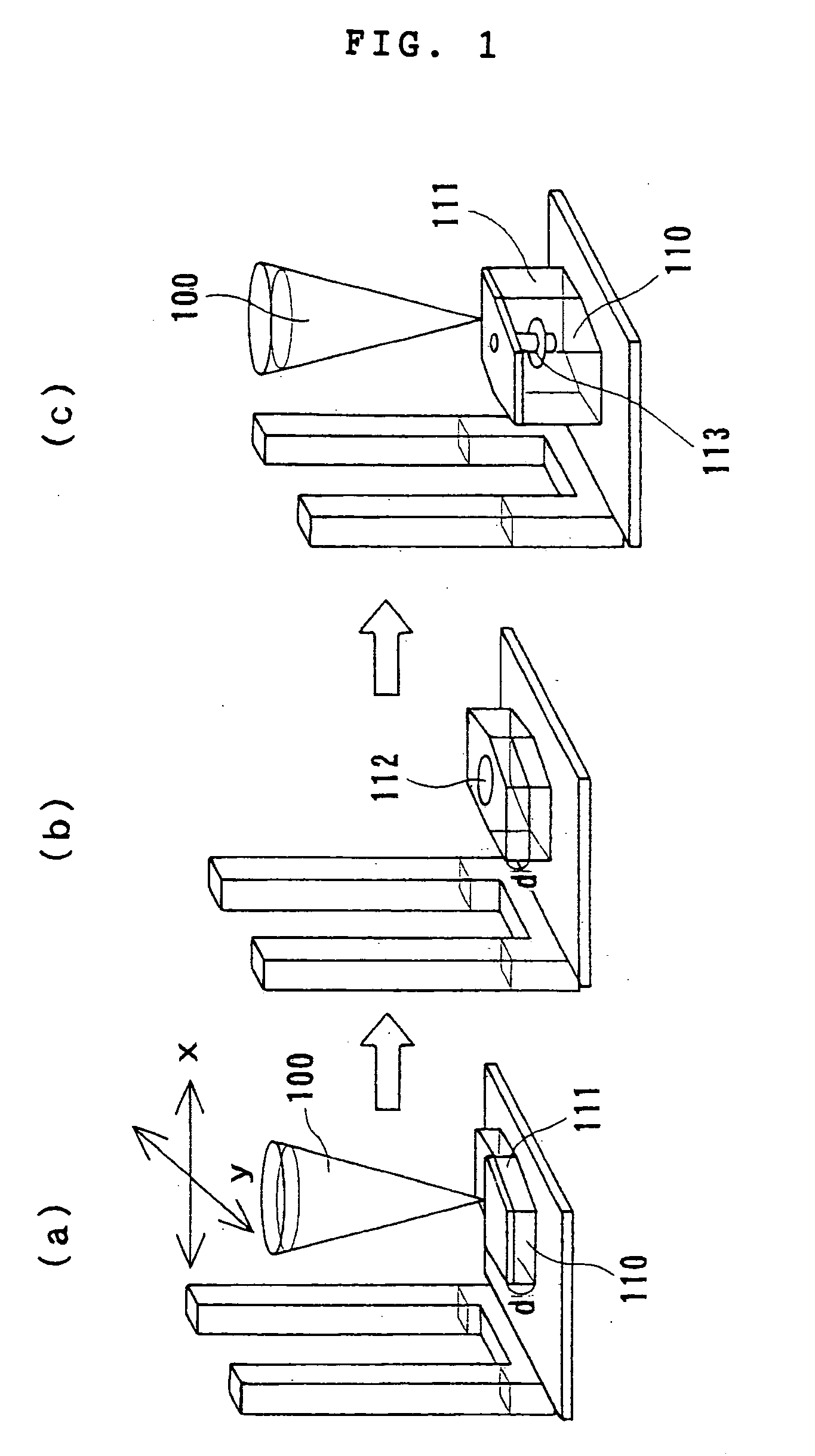Chemical reaction circuit for cell-free protein synthesis
a cell-free protein and reaction circuit technology, applied in the field of cell-free protein synthesis, can solve the problems of inability to carry out the transmission of light frequently conducted in the chemical field, product as high as tens of thousands of yen per piece, and product cracking, etc., and achieve the effect of relatively easy embedding into a microchip
- Summary
- Abstract
- Description
- Claims
- Application Information
AI Technical Summary
Benefits of technology
Problems solved by technology
Method used
Image
Examples
example 1
Construction of Chemical Reaction Circuit for Cell-Free Protein Synthesis
[0107] According to the hybrid micro stereolithography suggested by the present inventors (JP-A Nos. 7-329188, 2001-158050, 2001-157662, 2001-158000 and the like), a connector chip (6) as a micro chip having a connector part (6), a reservoir chip (1') as a micro chip having a reagent storage tank (1), a valve chip (2') as a micro chip having a unidirectional valve (2), a reactor chip (3') as a micro chip having a reaction tank (31) and a product storage tank (32), and a sensor chip (5') as a micro chip having a photo sensor (5), were shaped. A silicon membrane was incorporated into the valve chip (2'), an ultrafiltration membrane (MICROCON YM100, manufactured by Miropore) was integrated into the reactor chip (3'), and an avalanche photo diode was integrated into the sensor chip (5). Each micro chip was made as an octagon of 14 mm and a thickness of 2 to 5 mm excepting the connector chip (6). Further, the diamet...
example 2
Protein Synthesis Test
[0109] A test of protein synthesis was conducted using the chemical reaction circuit for cell-free protein synthesis as constructed in Example 1. The intended protein was firefly luminescence enzyme luciferase detectable easily.
[0110] FIG. 4 shows a schematic view of a chemical reaction circuit system for cell-free protein synthesis used for synthesis of luciferase.
[0111] (a) The feeding connectors (51, 52, 53) on the connector chip (5) of the chemical reaction circuit for cell-free protein synthesis as constructed in Example 1 were connected to the discharge side of a roller pump (8), and a discharge connector (54) was connected to the waste liquid tank (8). Into a first storage tank (11) on the reservoir chip (1') was introduced a reagent A (containing amino acid, ATP, GTP, DNA) composed of 3 .mu.l of ultra pure water, 1.25 .mu.l of Amino Acid Mixture 1 (manufactured by Promega, L1020 E. coli S30 Extract System for Circular DNA kit), 1.25 .mu.l of Amino Acid ...
PUM
| Property | Measurement | Unit |
|---|---|---|
| height | aaaaa | aaaaa |
| thickness | aaaaa | aaaaa |
| thickness | aaaaa | aaaaa |
Abstract
Description
Claims
Application Information
 Login to View More
Login to View More - R&D
- Intellectual Property
- Life Sciences
- Materials
- Tech Scout
- Unparalleled Data Quality
- Higher Quality Content
- 60% Fewer Hallucinations
Browse by: Latest US Patents, China's latest patents, Technical Efficacy Thesaurus, Application Domain, Technology Topic, Popular Technical Reports.
© 2025 PatSnap. All rights reserved.Legal|Privacy policy|Modern Slavery Act Transparency Statement|Sitemap|About US| Contact US: help@patsnap.com



